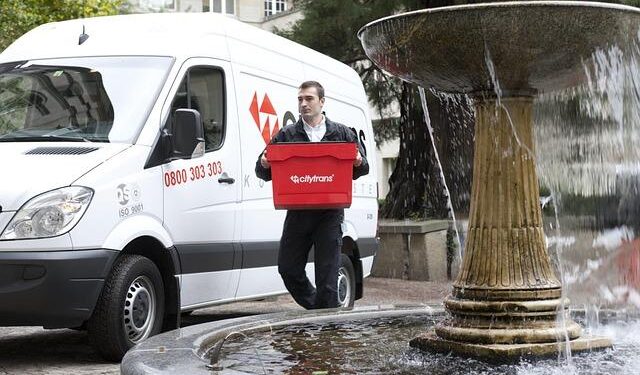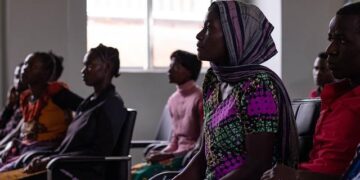Table of Contents
Part 1: The Crisis of Inheritance: My Story of a Hollow Victory
For the first fifteen years of my career, I thought I had it all figured O.T. As a financial planner and estate advisor, my world was one of numbers, structures, and strategies.
I could navigate the labyrinth of tax law in my sleep, design intricate trust structures to protect assets from creditors, and build investment portfolios engineered for multi-generational growth.
I saw myself as an architect of financial fortresses, and my clients’ ever-growing net worth was the measure of my success.
I believed, with the sincere conviction of a seasoned expert, that a perfectly optimized financial plan was the highest form of service I could offer.
A well-funded trust, I thought, was the bedrock of a lasting legacy.
I was wrong.
Painfully, devastatingly wrong.
The lesson came in the form of a family I’ll call the Harts.
They were the ideal clients: a self-made patriarch, a supportive matriarch, and three adult children who seemed to genuinely enjoy each other’s company.
I spent the better part of a year working with the father, meticulously crafting an estate plan for his multi-million-dollar business and personal assets.
We dotted every ‘i’ and crossed every ‘t’.
The spreadsheets were flawless, the tax efficiencies were maximized, and the legal documents were ironclad.
When the patriarch passed away, I felt a sense of professional pride.
I had done my job.
I had secured their financial future.
A year later, that future was in ruins.
The money was there, but the family was gone.
The three siblings, once close, were now bitterly estranged, locked in a legal battle that had nothing to do with the millions I had so carefully allocated.
They were fighting over things I hadn’t even thought to put on a spreadsheet: their father’s worn-out wristwatch, a first-edition collection of books, and perceived slights from a decade ago.1
The financial fortress I had built stood strong, but the family inside had crumbled to dust.
The wealth was preserved, but the legacy was destroyed.
That hollow victory haunted me.
It forced me to confront a truth I had been professionally trained to ignore: the numbers are the least important part of inheritance.
My experience, I soon discovered, was not an anomaly.
It was the norm.
Research has shown that a staggering 70% of families lose their inherited wealth by the second generation, and 90% lose it by the third.2
This isn’t a series of isolated accidents; it’s a systemic failure.
Further studies reveal that in cases of improper estate planning, 58% of families experience significant disputes that often end up in court.3
For years, I had believed these failures were due to poor investment choices or inadequate tax planning.
But the data tells a different story.
A landmark study on wealth transfer found that the vast majority of failures—a full 60%—are caused by a breakdown in communication and trust within the family.
Another 25% are due to heirs being inadequately prepared for their new responsibilities.
A mere 15% of failures trace back to the things my industry obsesses over: tax issues, legal mistakes, or poor financial advice.4
The realization hit me like a physical blow.
For my entire career, I had been diligently working to solve the 15% problem, while being completely blind to the 85% problem that was actually tearing families apart.
The entire wealth advisory industry, with its focus on complex financial instruments and sophisticated tax strategies, was treating the symptom—financial loss—while the disease of relational decay was allowed to fester.
We were like surgeons performing a perfect operation on a patient who was dying of malnutrition.
The procedure was flawless, but the patient was doomed from the start.
This was the crisis I had to face, not just for my clients, but for myself.
Part 2: The Craftsman’s Epiphany: A New Definition of Legacy
My disillusionment was total.
I felt like a fraud, an architect of beautiful houses with no foundations.
Every call from a prospective client felt like a temptation to repeat the same mistakes, to offer the same incomplete solutions.
I questioned my purpose, my profession, and the very definition of wealth I had built my life around.
I took a step back from my practice and began a period of intense searching, reading far outside the confines of financial journals.
I explored psychology, sociology, and history, looking for an answer.
The epiphany didn’t come from a textbook on finance.
It came from the world of ancient crafts.
I read about the Japanese art of Kintsugi, the practice of mending broken pottery with lacquer mixed with powdered gold.
The philosophy behind it is that the object becomes more beautiful and valuable because it was broken; its history is part of its new form.5
I studied the timeless relationship between a master craftsman and their apprentice, a bond where tacit knowledge—the deep, intuitive understanding of a craft—is passed down not through manuals, but through shared practice, observation, and mentorship.6
I discovered that Aristotle himself used the master craftsman, the
architekton, as his model for true wisdom—someone who understands not just the “how” but the “why,” and who possesses the ability to teach their craft to others.9
In these ancient traditions, I found a new and powerful metaphor for inheritance.
I realized that a truly enduring legacy is not a financial transaction; it is a craft.
This revelation gave me a completely new framework, which I call the “Legacy Craftsman” paradigm.
In this model:
- The financial assets—the money, the property, the investments—are merely the tools and materials in the workshop. They are important, but they are inert on their own.
- The family’s core values and mission are the blueprint or the design. This is the vision that guides the craftsman’s hand and gives the work its form and purpose.
- The wisdom, life lessons, and skills—financial literacy, resilience, business acumen, moral character—are the techniques of the craft, learned and perfected over a lifetime.
- The family’s relationships, trust, and communication are the soul of the workshop. It is the spirit that animates the work, the collaborative energy that allows for true creation.
The goal of the first generation, therefore, is not to simply hand over a workshop full of expensive tools to someone who has never used them.
The goal is to take on the next generation as apprentices.
It is to actively and intentionally pass on the entire craft—the philosophy, the blueprint, and the techniques—so they can become masters in their own right.
This reframes inheritance from a passive event that happens upon death to an active, multi-generational process of mentorship and co-creation.
This paradigm shift solved the central puzzle that had tormented me.
It explained the deep psychological turmoil so many heirs experience.
The feelings of guilt, the identity crises, the decision paralysis—what some call “Sudden Wealth Syndrome” 10—are not a result of having too much money.
They are the result of a fractured identity.
When you give someone a vast fortune without the corresponding sense of purpose and capability, you hand them a crushing weight, not a gift.
They inherit the “what” (the assets) without the “why” (the purpose) or the “how” (the skills).
This creates an internal vacuum filled with anxiety, self-doubt, and a paralyzing fear of failure.13
A craftsman’s identity, by contrast, is intrinsically linked to their work and the desire to do something well for its own sake.15
An apprentice doesn’t just receive the keys to the workshop on day one.
They earn their place.
They learn the philosophy, internalize the techniques through practice, and develop their own identity as a maker.
The Legacy Craftsman model makes the transfer of this identity the primary goal.
The process of legacy planning must become a process of identity formation for the next generation, equipping them with a sense of purpose and legitimacy strong enough to steward the responsibility they are about to receive.
Part 3: The Blueprint: Crafting Your Family’s Guiding Philosophy
Before a master craftsman picks up a single tool, they must have a clear vision of what they intend to build.
They work from a blueprint, a design that gives every cut, every joint, and every measurement its purpose.
For a family, this blueprint is its guiding philosophy—its “why.” This is the first and most crucial step in the Legacy Craftsman process.
Without it, you are simply accumulating materials with no plan, a path that almost inevitably leads to waste and chaos.
Subsection 3.1: Excavating Your Family’s Core Values
The first task is not to invent values, but to excavate them.
They already exist within your family’s history, your actions, and your deepest beliefs.
The challenge is to bring them to the surface and articulate them clearly.
This requires moving beyond the language of finance and into the language of the heart.
As an advisor, I stopped leading with questions about assets and started asking probing questions designed to uncover what truly matters 16:
- What do you and your family stand for, independent of your wealth?
- What were the most important money messages you learned growing up?
- What values do you cherish most, and which do you hope your children and grandchildren carry forward?
- How do you want your family to be remembered by your community?
The goal of this excavation is to define your family’s moral compass.
These are the non-negotiable principles that will guide every subsequent decision, from how you invest your money to how you resolve disagreements.17
It is a profound shift in perspective, captured perfectly by the author Joshua Becker: “Legacy is not leaving something
for people.
It’s leaving something in people”.19
Subsection 3.2: The Family Mission Statement – Your North Star
Once you have unearthed your core values, you must codify them into a tangible document: a Family Mission Statement.
This statement becomes the North Star for your family’s journey, the physical manifestation of your blueprint.
Trying to build a multi-generational legacy without a mission statement is like trying to assemble a complex puzzle without the picture on the box lid.
As one brilliant framework illustrates, family members working in isolation, without a shared vision, will end up frustrated and unsuccessful.
But when they have a clear picture of the final goal, they can work together effectively to achieve it.20
Creating this statement is a collaborative act of creation.
The process itself is as important as the outcome:
- Schedule a dedicated meeting: Set aside a specific time when the family can gather without distractions to focus on this single task.21
- Brainstorm and Discuss: Use your excavated values as a starting point. Ask key questions to guide the conversation: What is the purpose of our family? What kind of relationships do we want to have with one another? How can we contribute to the world around us?.20
- Draft and Refine: Write down the key themes and ideas. Work together to craft a statement that feels authentic to everyone. It doesn’t need to be long or formal, but it must be genuine. This process can take time, even months, but it is worth the effort to ensure every voice is heard.20
This finished statement becomes your family’s ultimate decision-making filter.
When faced with a choice, you can ask: “Is this aligned with our mission?”
Subsection 3.3: The Family Meeting – The Forge of Trust
The Family Meeting is the forum where the blueprint is shared, debated, and ratified.
It is the forge where raw values are hammered into a strong, unified mission.
Most importantly, it is the place where you actively build the communication and trust that are the antidote to the number one cause of inheritance failure.4
For many families, the idea of a formal meeting can feel rigid or corporate.
This is a misunderstanding of its function.
The structure of a well-run meeting is precisely what creates the psychological safety required for genuine emotional connection.
Without a formal process, difficult conversations about money, death, and values are often avoided.
Resentments fester in the silence, and trust erodes, leading to the exact blow-ups the meetings are designed to prevent.
The formality depersonalizes potential conflict.
An agenda item on “charitable giving” is far less threatening than an impromptu discussion that feels like an ambush.
Here is how to run an effective family meeting 16:
- Set a Regular Cadence: Meet at least annually, perhaps around a holiday or anniversary, to establish it as a cherished family tradition.
- Prepare and Share an Agenda: Circulate an agenda in advance so everyone knows what to expect and can prepare their thoughts. This keeps the meeting focused and respectful of everyone’s time.
- Establish Rules of Engagement: Agree on ground rules before you begin. Simple rules like “no interruptions,” “use respectful language,” and “turn off cell phones” can transform the dynamic of the conversation.
- Appoint a Facilitator: This could be a family patriarch or matriarch, or often more effectively, a neutral third-party advisor. The facilitator’s job is not to dictate, but to guide the conversation, ensure all voices are heard, and keep the discussion on track.
- Educate and Empower: Use the meetings as an opportunity for financial education, especially for younger generations. Explain the family’s financial structures, investment philosophy, and the roles and responsibilities of trustees or executors.
The structure of the meeting creates a predictable, safe container for the most difficult and important conversations a family can have.
This safety is the absolute prerequisite for the open, honest dialogue needed to build the kind of trust that can withstand the immense pressures of an inheritance.
The process liberates the content, allowing for true intimacy and connection to emerge.
Part 4: The Workshop: The Three Tiers of Holistic Inheritance Value
With the blueprint of your family’s philosophy in hand, we can now enter the workshop.
This is where we examine the tools, materials, and techniques of the legacy craft.
A holistic inheritance is not a single entity; it is a complex structure built upon three distinct but interconnected tiers of capital.
Forgetting any one of them is like a craftsman trying to build a chair with only two legs.
To make this concept clear and actionable, I developed the Holistic Inheritance Value Framework.
It serves as both a guide and a diagnostic tool for families to assess the completeness of their own legacy planning.
The Holistic Inheritance Value Framework
| Tier | Description | Key Components | Guiding Question for Your Family |
| Tier 1: Financial Capital | The “Tools & Materials.” The tangible assets that support the family’s mission. | Money, investments, real estate, business interests. | How can our financial resources best serve our family’s mission and values? |
| Tier 2: Intellectual & Human Capital | The “Techniques & Skills.” The wisdom, knowledge, and capabilities of the family. | Education, life lessons, business acumen, financial literacy, resilience, problem-solving skills. | What wisdom and skills must we intentionally pass on to empower the next generation? |
| Tier 3: Relational & Social Capital | The “Soul of the Workshop.” The trust, communication, and relationships that bind the family. | Family trust, communication patterns, shared history, community connections, conflict resolution skills. | How do we actively build and protect the trust and relationships that are our most valuable asset? |
Subsection 4.1: Tier 1 – Financial Capital (The Tools)
This tier is what most people think of as “inheritance.” It is the tangible wealth, the tools and materials of the craft.
While not the most important tier, it must be handled with skill and psychological awareness.
Receiving a large sum of money, especially when tied to the grief of losing a loved one, is an emotionally fraught experience.
Beneficiaries often cycle through a complex sequence of emotions: denial and shock, anger at the situation, a brief euphoria of financial freedom, followed by intense guilt and paralysis.14
To manage this emotional whiplash and avoid the pitfalls of “sudden wealth syndrome,” heirs need a deliberate strategy.
The most critical first step is to do nothing.
Resist the pressure to make immediate, life-altering decisions.
Instead, create a decision timeline that spaces out key choices over months or even a year.10
This allows time for grief to be processed separately from financial strategy.
It also provides a crucial buffer against the most common mistake: immediate and unsustainable lifestyle inflation.11
The foundation for successfully managing this tier is financial education, which should be a lifelong process.
It can start as early as childhood with simple tools like the three jars—”spending,” “saving,” and “giving”—to teach basic money management principles.4
For adults, it means a commitment to understanding the fundamentals of budgeting, investing, and wealth preservation.
Subsection 4.2: Tier 2 – Intellectual & Human Capital (The Techniques)
This tier represents the master’s techniques—the invaluable, intangible assets of wisdom, skill, and character.
This is the heart of the apprenticeship.
Passing on financial capital without this intellectual and human capital is like giving someone a state-of-the-art workshop without teaching them how to use a single tool.
It’s a recipe for disaster.
The transfer of this capital must be intentional and multifaceted.
Several powerful methods exist for passing on these “techniques”:
- The Legacy Letter: This is a profoundly personal, non-legal document where you can share your life lessons, hopes, values, and wisdom in your own words. It is a gift of your very essence, offering guidance and comfort long after you are gone.25
- Documenting Family Stories: Every family has a mythology—stories of struggle, triumph, failure, and resilience. These narratives are a primary carrier of your family’s culture and character. Writing them down, recording them, or sharing them regularly in family meetings ensures they are not lost to time.25
- Structured Mentorship: The apprentice learns by doing, under the watchful eye of the master. Families can formalize this process by creating opportunities for shadowing, coaching, or intergenerational teaming, where younger members learn directly from the experience of their elders.26
- Business Succession: For families with a business, the apprenticeship is even more critical. A successful transfer involves a long-term plan where heirs start at the bottom, learn every facet of the operation, prove their capabilities, and forge their own relationships with employees and clients. This process ensures they inherit not just a title, but a deep, earned understanding of the enterprise they are meant to lead.28
Subsection 4.3: Tier 3 – Relational & Social Capital (The Soul)
This is the most vital and most fragile tier of all.
It is the “soul of the workshop.” Relational capital is the wealth found in the strength of your family’s bonds, the depth of your trust, and the quality of your communication.
Academic research confirms this, identifying “relational wealth” as the web of social ties and mutual support networks that truly determines a family’s long-term well-being.31
Unlike material wealth, which can be transferred with the stroke of a pen, relational wealth cannot be so easily bequeathed.
It is highly subject to the “vagaries of learning” and must be actively and continuously cultivated across generations.31
The erosion of this capital is the root cause of the “shirtsleeves to shirtsleeves” phenomenon.
When communication breaks down and trust disappears, the family system collapses, and the financial wealth inevitably follows.
How do you build and protect this precious asset? The tools are the very ones we discussed in Part 3.
It is built in the forge of the family meeting.
It is reinforced by a shared family mission.
It is nurtured through open, honest, and courageous conversations.
Building this “soul” is the primary work of the Legacy Craftsman.
It is the invisible foundation upon which all other forms of wealth depend.
Part 5: The Masterpiece: Unifying the Family Through Shared Purpose
When the blueprint is clear and the workshop is in order—when values are defined, skills are being transferred, and relationships are strong—the family is ready to create its masterpiece.
This is the culmination of the Legacy Craftsman’s work.
The legacy ceases to be a plan on paper and becomes a living, breathing entity in the world.
The most powerful way to achieve this is by uniting the family in a project of shared purpose.
Subsection 5.1: Family Philanthropy as the Ultimate Apprenticeship
I have found that shared family philanthropy is the single most effective “capstone project” for a family’s legacy journey.
It is not an afterthought or simply a way to get a tax deduction; it is the ultimate apprenticeship.
It provides a real-world, high-stakes training ground where all three tiers of the Holistic Inheritance Value Framework must be integrated and put into practice.18
Consider how a collaborative giving plan forces a family to engage with the entire craft:
- It Activates the Blueprint: The family must use its mission statement and core values to answer the fundamental questions: What change do we want to see in the world? Which causes align with what we stand for? This transforms abstract values into concrete action.22
- It Deploys the Tools: The family must manage its financial capital effectively to fund its philanthropic goals, making decisions about budgeting, investment returns, and the most appropriate giving vehicles, such as a family foundation or a donor-advised fund (DAF).32
- It Hones the Techniques: Younger generations are given real responsibility. They can be tasked with researching organizations, performing due diligence, and presenting their findings to the family. This is hands-on training in critical thinking, financial analysis, and strategic decision-making.18
- It Fortifies the Soul: Most importantly, shared philanthropy requires collaboration. Family members must communicate, negotiate, build consensus, and sometimes, agree to disagree respectfully. This process directly builds the relational capital that is the essential ingredient for long-term family unity and success.34
This process serves as a powerful inoculation against future conflict.
The greatest risk in any inheritance is that family members, who have never had to make high-stakes decisions together, are suddenly forced to do so in the emotionally charged aftermath of a parent’s death.
This is a recipe for disaster.
Collaborative philanthropy provides a controlled, lower-stakes environment for the family to practice this very skill.
By learning to resolve disagreements over a grant to the local museum, they develop the “antibodies”—the communication protocols, the conflict-resolution muscles, and the reservoir of trust—needed to handle the much larger and more fraught decisions that will come with settling the main estate.
The philanthropic work serves as a crucial training ground, effectively vaccinating the family against the destructive potential of future conflict.
Subsection 5.2: A Case Study in Success – The Legacy Craftsman in Action
I will never forget the family that proved to me this model could work.
They came to me after the near-disaster with the Harts, when I was just beginning to formulate these ideas.
The family owned a successful manufacturing business, and the patriarch, like so many others, was primarily focused on the tax implications of the transfer to his two sons and one daughter.
Instead of starting with spreadsheets, I started by asking them about their story.
We implemented the Legacy Craftsman framework step-by-step.
- The Blueprint: I facilitated a series of family meetings, not in my boardroom, but at their family lake house. Over a weekend, we excavated their values: a fierce commitment to their employees, a belief in American manufacturing, and a deep-seated sense of community responsibility. Together, we drafted a family mission statement that captured this ethos.
- The Workshop: We designed a multi-year apprenticeship. The two sons, already in the business, were given rotating leadership roles in different departments to broaden their expertise. The daughter, who was a teacher, was tasked with creating a financial literacy program for the family’s younger generation. We began the intentional transfer of intellectual capital.
- The Masterpiece: This was the game-changer. We established a modest family donor-advised fund with the local community foundation.32 The three siblings were appointed as the advisory committee, tasked with a single goal: to recommend $50,000 in grants to local vocational training programs, in line with their mission to support skilled labor.
The initial meetings were tense.
They disagreed on which programs were most effective and how to measure impact.
But because they had a shared mission as their North Star and a facilitated process, they worked through it.
They learned to listen, to compromise, and to build a case for their positions.
They learned to make a major financial decision together.
When the time came for the patriarch to step back, the business transfer was seamless.
But the real success was not on the balance sheet.
It was in the dynamic between the siblings.
They had a proven process for making hard decisions.
They had a reservoir of shared accomplishment and trust.
They had not just inherited a business; they had inherited the craft of being a family that worked together.
Conclusion: Your Legacy is the Next Generation of Craftsmen
My own journey has taken me from being a wealth manager to a legacy architect, from an expert in financial instruments to a student of human connection.
I have learned that the traditional approach to inheritance is fundamentally flawed because it is based on a mistaken premise.
It presumes the goal is to transfer assets.
But the true goal of a great legacy is to build people.
The ultimate measure of your success as a family leader is not the size of the estate you leave behind.
It is the capability, character, and unity of the people you leave it to.
The craftsman’s greatest pride is not in a single, perfect piece of furniture locked away in a museum.
It is in the thriving workshop of their apprentice, who has taken the master’s tools, techniques, and philosophy and is now creating beautiful and useful things for a new generation.
Your legacy is not a static inheritance to be preserved under glass.
It is a dynamic, living tradition of value, purpose, and creation.
It is the fire you kindle in your children, not the ashes you leave for them.
The challenge, and the opportunity, is to shift your perspective from what you will leave for your family to what you will build in them.
That is the greatest inheritance of all.
Works cited
- Seventy Percent of Families Fight over Inheritance | Stock, Carlson …, accessed on August 11, 2025, https://www.dupagelawyers.com/wheaton-family-law-estate-planning/families-fight-over-inheritance
- Thought Leadership – Family Wealth Advisors Council, accessed on August 11, 2025, https://familywealthadvisorscouncil.com/thought-leadership/
- Lack of estate planning leads to family feuds, study shows …, accessed on August 11, 2025, https://www.investmentnews.com/retirement-planning/lack-of-estate-planning-leads-to-family-feuds-study-shows/240734
- Preparing your family for wealth transfer | Vanguard, accessed on August 11, 2025, https://investor.vanguard.com/wealth-management/family-legacy-services/knowledge-center/preparing-wealth-transfer
- Discover Japanese Craftsmanship | Travel Japan (Japan National Tourism Organization), accessed on August 11, 2025, https://www.japan.travel/en/sustainable/discover-japanese-craftsmanship/
- Knowledge of traditional craft practitioners has been transferred through master-apprentice relations., accessed on August 11, 2025, http://www.na-businesspress.com/AJM/AJM20-2/4_JensenFinal.pdf
- (PDF) Knowledge transfer: The Craftmen’s abstraction – ResearchGate, accessed on August 11, 2025, https://www.researchgate.net/publication/291761775_Knowledge_transfer_The_Craftmen’s_abstraction
- Craftsmanship: Craftsmanship: The Labor Intensive Journey to Mastery – FasterCapital, accessed on August 11, 2025, https://www.fastercapital.com/content/Craftsmanship–Craftsmanship–The-Labor-Intensive-Journey-to-Mastery.html
- David Charles and Aristotle’s Master Craftsmen – DigitalCommons@ONU, accessed on August 11, 2025, https://digitalcommons.onu.edu/cgi/viewcontent.cgi?article=1043&context=phre_faculty
- The Psychology of an Inheritance Windfall: Managing Emotions for …, accessed on August 11, 2025, https://whzwealth.com/blog/the-psychology-of-an-inheritance-windfall-managing-emotions-for-strategic-financial-success
- The Psychology of an Inheritance Windfall – Birch Street Financial Advisors, accessed on August 11, 2025, https://birchstreetadvisors.com/blog/the-psychology-of-an-inheritance-windfall
- The Psychology of Wealth – Weatherbys Private Bank, accessed on August 11, 2025, https://www.weatherbys.bank/insights/the-psychology-of-wealth/
- The Untold Pressures of Wealth – Psychology Today, accessed on August 11, 2025, https://www.psychologytoday.com/us/blog/quest-for-legitimacy/202505/the-untold-pressures-of-wealth
- Moving Past the Guilt of Inherited Wealth | U.S. Bank, accessed on August 11, 2025, https://www.usbank.com/wealth-management/financial-perspectives/trust-and-estate-planning/guilt-of-inherited-wealth.html
- Shop Class as Soulcraft – The New Atlantis, accessed on August 11, 2025, https://www.thenewatlantis.com/publications/shop-class-as-soulcraft
- Navigating HNW Family Dynamics: It’s Time for Advisors to Get …, accessed on August 11, 2025, https://www.commonwealth.com/insights/navigating-hnw-family-dynamics-advisors-get-personal
- Tools to Transfer Values with Wealth | Northern Trust, accessed on August 11, 2025, https://www.northerntrust.com/united-states/institute/articles/tools-to-transfer-values-with-wealth
- Passing Down Your Legacy: A Philosophy for Family Philanthropy, accessed on August 11, 2025, https://www.tollesonwealth.com/insights-and-news/passing-down-your-legacy-a-philosophy-for-family-philanthropy/
- Inheritance: It’s More than You Think – Becoming Minimalist, accessed on August 11, 2025, https://www.becomingminimalist.com/inheritance/
- Family Mission Statement: How to Create One in 3 Steps, accessed on August 11, 2025, https://www.leaderinme.org/blog/create-family-mission-statement-3-steps/
- www.as-they-grow.com, accessed on August 11, 2025, https://www.as-they-grow.com/a-family-mission-statement
- The Power of Family Giving | Fidelity Charitable, accessed on August 11, 2025, https://www.fidelitycharitable.org/guidance/family-philanthropy/power-of-family-giving.html
- Family Meetings: Strengthening Wealth Education & Financial …, accessed on August 11, 2025, https://www.commercetrustcompany.com/research-and-insights/articles/family-meetings-for-high-net-worth-families
- The Emotional Journey Of Inheritance: Balancing Grief With Financial Decisions, accessed on August 11, 2025, https://inheritanceadvanced.com/blog/the-emotional-journey-of-inheritance/
- Legacy Planning: 6 Ways to Pass on Your Values and Life Lessons – Z Family Law, accessed on August 11, 2025, https://www.zfamilylaw.com/blog/legacy-planning
- How to Knowledge Transfer Effectively Across Generations — Ryan …, accessed on August 11, 2025, https://blog.ryan-jenkins.com/how-to-knowledge-transfer-effectively-across-generations
- The Science of Mentoring Relationships: What Is Mentorship? – NCBI, accessed on August 11, 2025, https://www.ncbi.nlm.nih.gov/books/NBK552775/
- Business Succession: 3 Ways to Transfer Ownership – Charles Schwab, accessed on August 11, 2025, https://www.schwab.com/learn/story/business-succession-3-ways-to-transfer-ownership
- You’ve inherited a business. Now what? – Towne Wealth Management, accessed on August 11, 2025, https://www.townewealthmanagement.com/commentary-and-insights/2024/12/30/youve-inherited-a-business-now-what
- The Emotional Side of Business Succession Planning – Granite Harbor Advisors, accessed on August 11, 2025, https://graniteharbor.com/learning-center/articles/the-emotional-side-of-business-succession-planning
- Intergenerational Wealth Transmission and the Dynamics of …, accessed on August 11, 2025, https://pmc.ncbi.nlm.nih.gov/articles/PMC2792081/
- Family Philanthropy | NPTrust, accessed on August 11, 2025, https://www.nptrust.org/family-philanthropy/
- Legacy in Family Philanthropy: A Modern Framework – Fidelity Charitable, accessed on August 11, 2025, https://www.fidelitycharitable.org/content/dam/fc-public/docs/resources/legacy-in-family-philanthropy-a-modern-framework.pdf
- Philanthropy in Complex, Multi-Generational Families: | NCFP, accessed on August 11, 2025, https://www.ncfp.org/wp-content/uploads/2023/04/Philanthropy-in-Complex-Multi-Generational-Families-NCFP-2023.pdf






